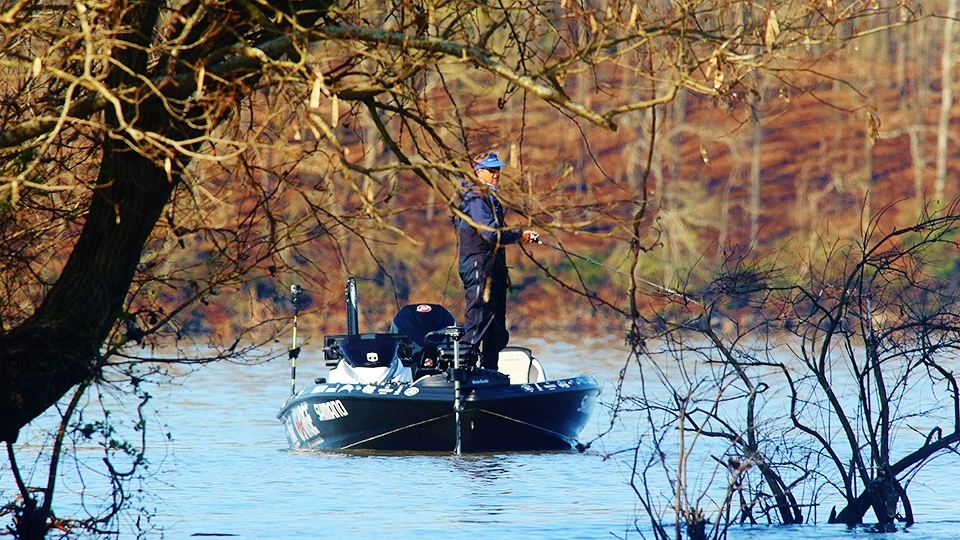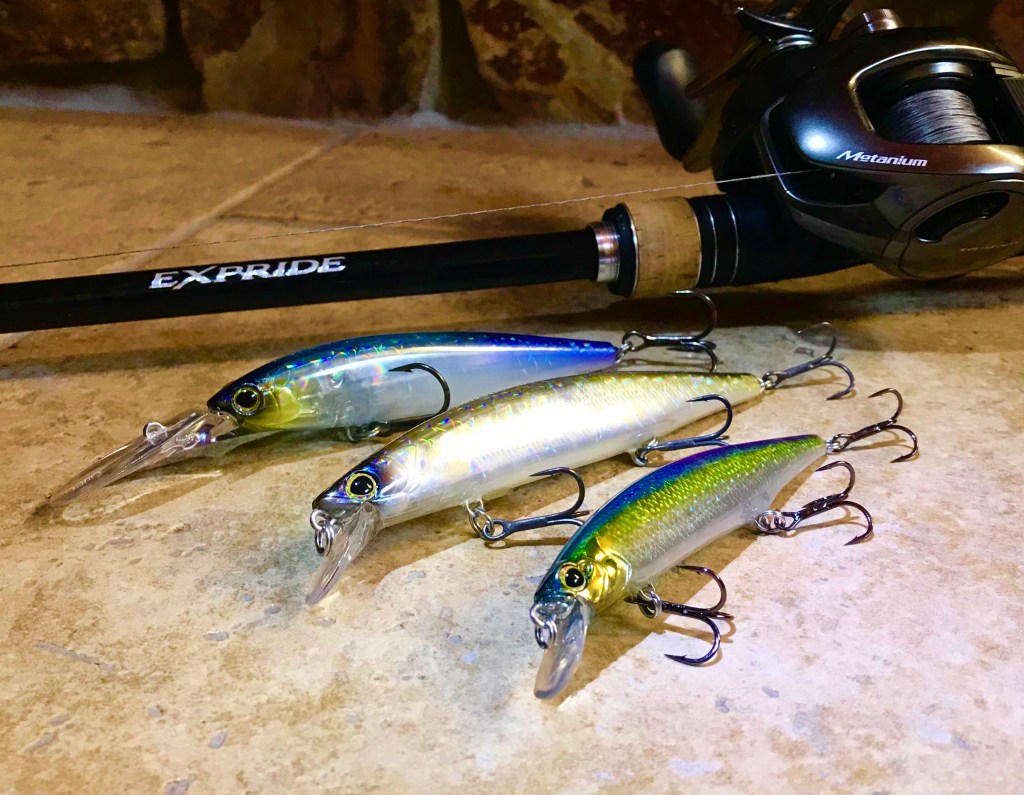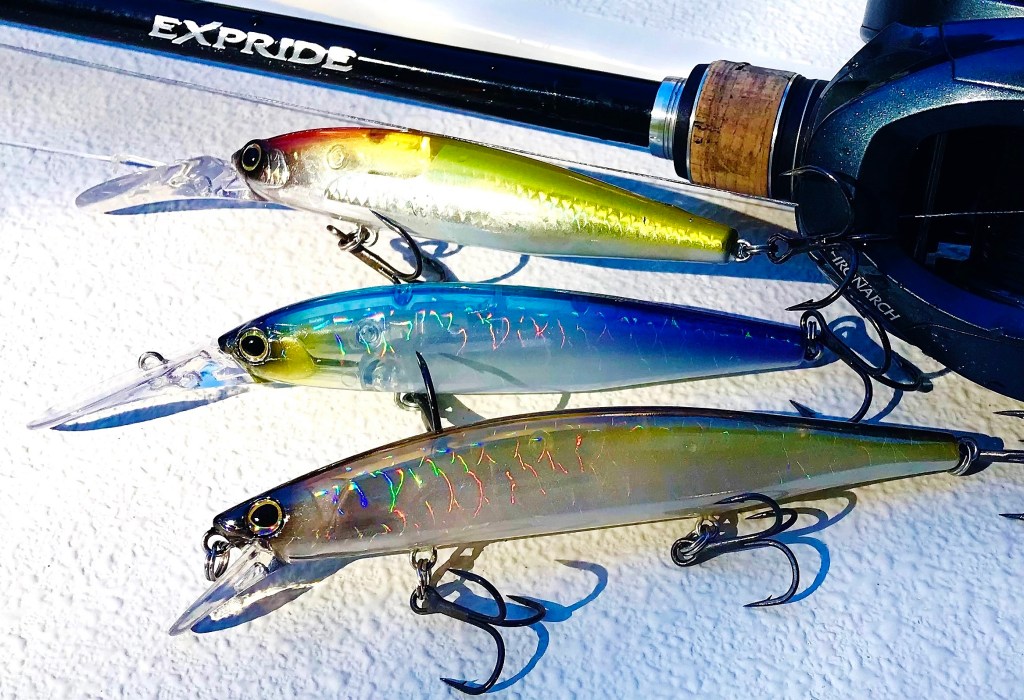
As you read this, bass in the South are preparing for the spawn. They’re staging in key locations adjacent to their intended bedding areas and, on warmer days, the males are cruising the shallows, with some even staking their claims.
Farther north, toward the Mason-Dixon Line, the fish aren’t quite in that mode. The majority are still holding in their wintertime haunts — be it rock bluffs, drains or, in the case of rivers, deep creeks and backwater ponds.
Regardless of whether you are in the southernmost parts of the country or slightly further north, jerkbaits become an excellent choice when temperatures plummet, effectively enticing bass to bite.
Where to look
From Southern California to Texas and all the way to Florida, prespawn bass confronted with winter fronts will usually back off. And when they do, they tend to group up in key areas.
Those might include steeper drops along deep weedlines, channel swings leading into spawning flats or perhaps something more cover oriented, such as a brush-laden dock or deeper stand of cypress trees.
Farther north, they may collect where bluff banks transition to chunk rock or pea gravel, or on primary points leading into spawning bays. They might also be in drains located at the backs of deeper pockets.
Wherever they group up, it presents an excellent opportunity to pick them off with a jerkbait.

When and what to jerk
Assuming we know where the fish are located and the depth at which they’re holding. The next step is to choose the appropriate jerkbait — one that can reach that approximate depth and coax them to bite.
Remember, we’re talking cold water, lethargic fish, so not just any minnow-shaped lure will work. You’ll want something you can put in front of them that can force a strike.
Suspending jerkbaits do just that. They have the ability to remain in the strike zone indefinitely, and the longer they’re in front of the fish, the more apt they are to be bitten. You just need a lure that will provoke them.
While there are numerous brands that can achieve this, a series of jerkbaits that offer an added enticement are Shimano’s Zumverno, World Minnow and World Diver. These baitfish imitators are designed to run from 4 to 12 feet deep, depending on the model and the pound rating of the line used.
As for the added enticement, it’s called “Flash Boost” — an internal, reflective Mylar strip that flickers continuously, even when the lure is at rest. It’s as if the lure has a heartbeat.
When pulled to a stop, the Flash Boost feature continues to flash and pulse, attracting fish that may or may not be in the mood. And I like that, particularly in brutally cold conditions.
When bass are chilled to a negative mood, it usually requires an ultra-slow presentation to make them react. And in the context of jerkbaits, that translates to long pauses between pulls. It’s sort of an “in your face” tactic, and it definitely works. So when I’m pausing the lure for extended periods — knowing the fish are trying to decide whether or not to commit — the perpetual flickering of the Flash Boost feature holds their interest and can eventually force them to strike.
The cadence is usually the same: two jerks with a pause. The length of that pause depends largely on water temperature and the mood of the fish. Usually the colder it gets, the longer the pause — sometimes as much as 15 seconds or more.
On warmer days, when the fish become more active, I’ll try speeding the cadence. And if forward-facing sonar is part of my presentation, I’ll observe the fish and how they react to each movement of the lure. If they seem more excited by perpetual movement, then I’ll give the lure just that. If not, I’ll slow the cadence … sometimes dramatically.
Shimano jerkbaits also feature “Jet Boost” — an internal weight transfer system that not only extends the length of your casts, it assures the proper attitude of the lure during the retrieve (which is slightly nose down). Add to that “Scale Boost” — an enhanced, highly reflective scale pattern — and you have the total package.

A complete system
Whichever jerkbait you choose for a given situation, you’ll need the right balance of tackle to make it perform to its fullest potential.
Most anglers proficient in the technique prefer medium-action casting rods in lengths of 6-foot-10 to 7-foot-2, paired with low profile, medium-speed reels. I agree with this standard.
My ideal setup for most situations is the Shimano Expride EXC610MB (6-foot-10 medium-action) paired with either a Metanium MGL 150HG or Curado DC 150HG baitcasting reel, both in 7:1 ratios. These combinations provide ease of casting, even in a brisk, head-on wind. They also fit comfortably in my palm for hours of repetitious retrieves.
Although the usual preference is for baitcasters, spinning tackle can also work … particularly with smaller, lighter lures. With the right balance, you’re able to cast featherweight jerkbaits with increased distance and accuracy. Again, 6-foot-10 to 7-foot-2 medium-action rods are best. Pair them with 2500 to 3000 size reels. A solid setup is the Expride EXS70MB with a Miravel, Stradic or Vanford spinning reel. If price is no object, then try a Twin Power, Sustain or Stella in that same size range.
Regardless of the type of setup, I’ll spool up with either 8-, 10- or 12-pound Mastiff fluorocarbon line. The smaller the diameter, the deeper the lure will travel. However, don’t base your choice solely on depth. Water clarity and the type cover you’re dealing with will also factor in … even the size of the fish.
If you’re fishing in open water with very few snags, you can get away with lighter line, which could yield more bites. But if you’re confronted with off-colored water and any type of threatening cover — such as standing timber, submerged grass or brush — then heavier line is in order.
It’s a bit of a tradeoff, so weigh the costs. And don’t forget to alter your retrieve to suit the conditions and mood of the fish. Do that and I guarantee you will catch more cold weather bass.
Follow Bernie Schultz on Instagram, Facebook and through his website.





